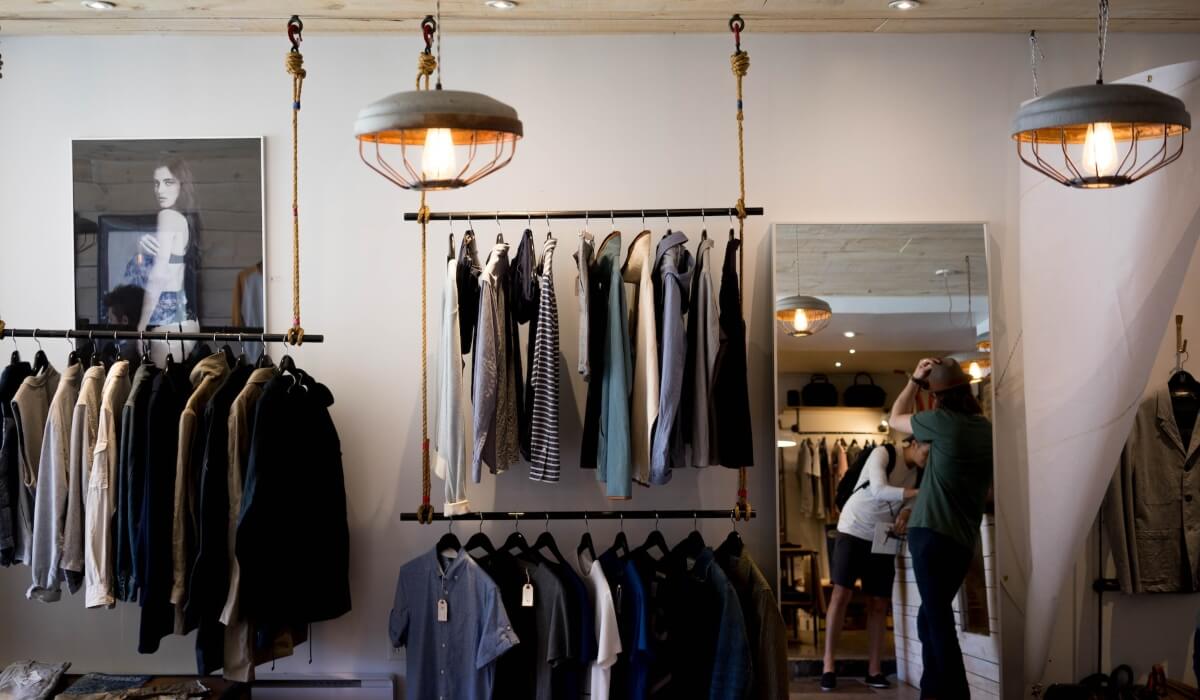In the ever-evolving realm of fashion, ready-to-wear designers play a crucial role in bringing style and creativity to the masses. Their ability to transform ideas into wearable art is a captivating process that involves a myriad of stages and techniques. From the initial spark of inspiration to the final touches, the journey from sketch to runway unveils the fascinating creative process of ready-to-wear designers.
Featured Photo by Clark Street Mercantile on Unsplash
In this article, we delve into the intricacies and behind-the-scenes magic of this process, exploring the steps taken by designers to craft stunning garments that capture the essence of contemporary fashion. Join us as we unravel the secrets and techniques that contribute to the world of ready-to-wear design.
1. Introduction: The World of Ready-to-Wear Designers
Welcome to the captivating world of ready-to-wear designers, where creativity knows no bounds and fashion dreams become a runway reality. These talented individuals have mastered the art of taking inspiration from the world around them and transforming it into wearable works of art. From sketch to runway, they navigate a labyrinth of ideas, fabrics, and trends to bring us the latest in ready-to-wear fashion. Join us as we unveil the creative process behind their collections and discover the magic that happens behind the scenes.
2. Gathering Inspiration: Unveiling the Creative Spark
2.1 Exploring Influences: From Art to Culture
Every masterpiece begins with a spark of inspiration. Ready-to-wear designers delve into a vast realm of influences, drawing inspiration from art, nature, history, and even pop culture. They immerse themselves in museums, wander through bustling streets, and dive deep into books, seeking that elusive creative spark. It’s all about finding that perfect blend of colors, textures, and shapes that will captivate the fashion world and make heads turn on the runway.
2.2 Runway Trends and Fashion Forecasting
But it’s not just about personal inspiration. Ready-to-wear designers are also keen observers of the fashion landscape, constantly on the lookout for emerging trends and forecasting the next big thing. They study the latest fashion shows, follow influencers, and analyze street styles to understand the pulse of the fashion industry. Armed with this knowledge, they infuse their unique perspective to create designs that reflect the zeitgeist while staying true to their artistic vision.

Draped mini shirt dress Alexander Wang
3. Sketching the Vision: Translating Ideas into Designs
3.1 From Mind to Paper: Capturing Design Concepts
Once the creative spark ignites, it’s time to put pen to paper and bring those ideas to life. Ready-to-wear designers sketch their vision, meticulously outlining each detail, from the neckline to the hemline. These initial sketches serve as a visual blueprint, capturing the essence of the design and allowing for further exploration and refinement.
Also Read: Walking the Red Carpet: The Glamour and Prestige of Designer Clothing
3.2 Developing the Design Language: Silhouettes, Colors, and Themes
Beyond the initial sketches, ready-to-wear designers delve deeper into the design language of their collection. They experiment with silhouettes, playing with proportions, lengths, and shapes to create garments that flatter the body and evoke a desired mood. Colors and themes are carefully chosen, reflecting the designer’s artistic vision and bringing cohesiveness to the collection. It’s a delicate balance between pushing boundaries and staying true to their brand identity.
Versace – Black Viscose-wool Blend Blazer 4
4. Selecting Fabrics and Materials: The Foundation of Ready-to-Wear Designers
4.1 Fabric Exploration: Weaving the Perfect Blend
Also Read: From Zero to Stardom: The Success Stories of Fast Fashion Designers
Fabric selection is the backbone of any ready-to-wear collection. Designers embark on a quest to find the perfect blend of fabrics that will bring their designs to life. They explore different textures, weights, and patterns, carefully considering how each fabric will drape, move, and complement the design. From luxurious silks to cozy knits, they search for the materials that will elevate their creations to a whole new level.
4.2 Considering Practicality and Performance
While aesthetics play a crucial role, ready-to-wear designers know that practicality and performance are equally important. They consider the functionality of each garment, ensuring that it not only looks fabulous on the runway but also performs well in the real world. From durability to breathability, they balance style and substance, creating garments that don’t just make a statement but also stand the test of time.
Also Read: From the Runway to the Red Carpet: Celebrating the Visionary Haute Couture Designers

From gathering inspiration to sketching designs and selecting fabrics, the creative process of ready-to-wear designers is a thrilling journey that culminates in the unveiling of their collections on the runway. So next time you don a fabulous ready-to-wear piece, take a moment to appreciate the passion, dedication, and artistry that went into bringing that garment to life.
5. Pattern Making and Prototyping: Bringing Designs to Life
5.1 Drafting Patterns: Transferring Designs to Templates
Once a designer has finalized their sketches, it’s time to transform those two-dimensional drawings into three-dimensional garments. This is where the magic of pattern-making comes into play. Pattern makers meticulously transfer the intricate details of the design onto paper templates, ensuring that every curve, seam, and dart is accurately represented. It’s like turning a beautiful blueprint into a tangible reality.
5.2 Toile Construction: Testing and Refining the Initial Prototype
Before cutting into luxurious fabrics, designers create a prototype called a toile. This is made from a plain cotton fabric that allows them to test the fit and construction of the design. Toile construction is a crucial step in the creative process as it gives designers a chance to refine the proportions, shape, and any other elements that may need adjusting. It’s like a dress rehearsal before the grand runway performance.
6. From Cutting Table to Sewing Machine: The Art of Garment Construction
6.1 Mastering Techniques: Seams, Hems, and Sewing Details
With the patterns perfected, it’s time to bring the designs to life using a sewing machine and some serious craftsmanship. Skilled seamstresses and tailors carefully cut the fashion fabrics, piece them together, and sew seams and hems with precision. It’s a delicate dance between fabric and thread, where each stitch and technique contributes to the overall quality and longevity of the garment.
6.2 Tailoring for Precision: Ensuring Quality and Fit
Tailoring is the secret ingredient that elevates ready-to-wear garments to a whole new level. Whether it’s creating perfectly fitted waistbands, tailored jackets, or structured bodices, the art of tailoring ensures that each piece hugs the body in all the right places. This meticulous attention to detail in the construction process allows for impeccable fit and helps the garment maintain its shape over time.
7. Fittings and Adjustments: Perfecting the Fit and Silhouette
7.1 Dressing the Mannequin: Evaluating Proportions and Drape
Once the garments are constructed, they undergo a series of fittings to ensure the perfect fit and silhouette. Fashion designers and stylists dress mannequins to evaluate how the fabrics drape, how the proportions look, and whether any adjustments are needed. It’s like having a personal fashion show in the studio, where designers can fine-tune their creations before they hit the runway.
7.2 Real-Life Trials: Fine-Tuning the Garment on Models
After the mannequin fittings, it’s time for real-life trials. Models slip into the garments, and designers analyze how the designs translate on the body. This stage is crucial for understanding how the garments move, whether there are any restrictions or discomfort, and if any final adjustments need to be made. It’s like the final dress rehearsal before the big show.
8. The Final Touches: Embellishments, Accessories, and Finishing Details
8.1 Embroidery, Beading, and Appliques: Adding Intricate Details
To make their ready-to-wear designs truly shine, designers often add exquisite embellishments. Whether it’s delicate embroidery, intricate beading, or eye-catching appliques, these details add a touch of luxury and uniqueness to the garments. It’s like adding the perfect accessories to elevate an outfit from ordinary to extraordinary.
8.2 Accessories and Styling: Completing the Ready-to-Wear Ensemble
To complete the ready-to-wear ensemble, designers carefully select accessories that complement their designs. From statement belts to bold jewelry and stylish shoes, these finishing touches create a cohesive and polished look that enhances the overall aesthetic. It’s like the final brushstrokes on a masterpiece, tying everything together and making the design truly runway-worthy.
In conclusion, the creative process of ready-to-wear designers is a remarkable blend of imagination, skill, and attention to detail. From gathering inspiration to selecting fabrics, pattern making, garment construction, and perfecting the fit, each stage requires dedication and expertise. The journey from sketch to runway is an incredible transformation that showcases the talent and innovation of these designers. The world of ready-to-wear fashion is a captivating realm, where creativity meets practicality, and the result is a collection of garments that inspire, empower, and captivate the fashion-conscious individual.
Ready-to-wear designers
FAQ
Q: How do ready-to-wear designers find inspiration for their designs?
A: Ready-to-wear designers draw inspiration from various sources, including art, culture, nature, and current fashion trends. They stay updated on runway shows, and fashion forecasts, and immerse themselves in different creative mediums to spark their imagination.
Q: What materials do ready-to-wear designers typically use for their garments?
A: Ready-to-wear designers select a wide range of fabrics and materials depending on their designs and desired outcomes. They may use natural fibers like cotton, silk, or wool, as well as synthetic materials like polyester or nylon. The choice of materials depends on factors such as comfort, durability, drape, and the desired aesthetic of the garment.
Q: How do ready-to-wear designers ensure the perfect fit for their garments?
A: Ready-to-wear designers employ various techniques to ensure the perfect fit of their garments. This includes creating and refining patterns through multiple fittings, making adjustments based on the body measurements of models or mannequins, and utilizing tailoring techniques to achieve precision in the silhouette. These iterative processes help designers achieve a flattering and comfortable fit for a wide range of body types.
Q: What are some common embellishments and finishing details used by ready-to-wear designers?
A: Ready-to-wear designers often use embellishments such as embroidery, beading, appliques, or sequins to add intricate details and enhance the visual appeal of their garments. Additionally, they pay attention to finishing details like buttons, zippers, linings, and trims to ensure a polished and refined look. These elements contribute to the overall aesthetic and contribute to the uniqueness of the ready-to-wear design.



Leave a Reply